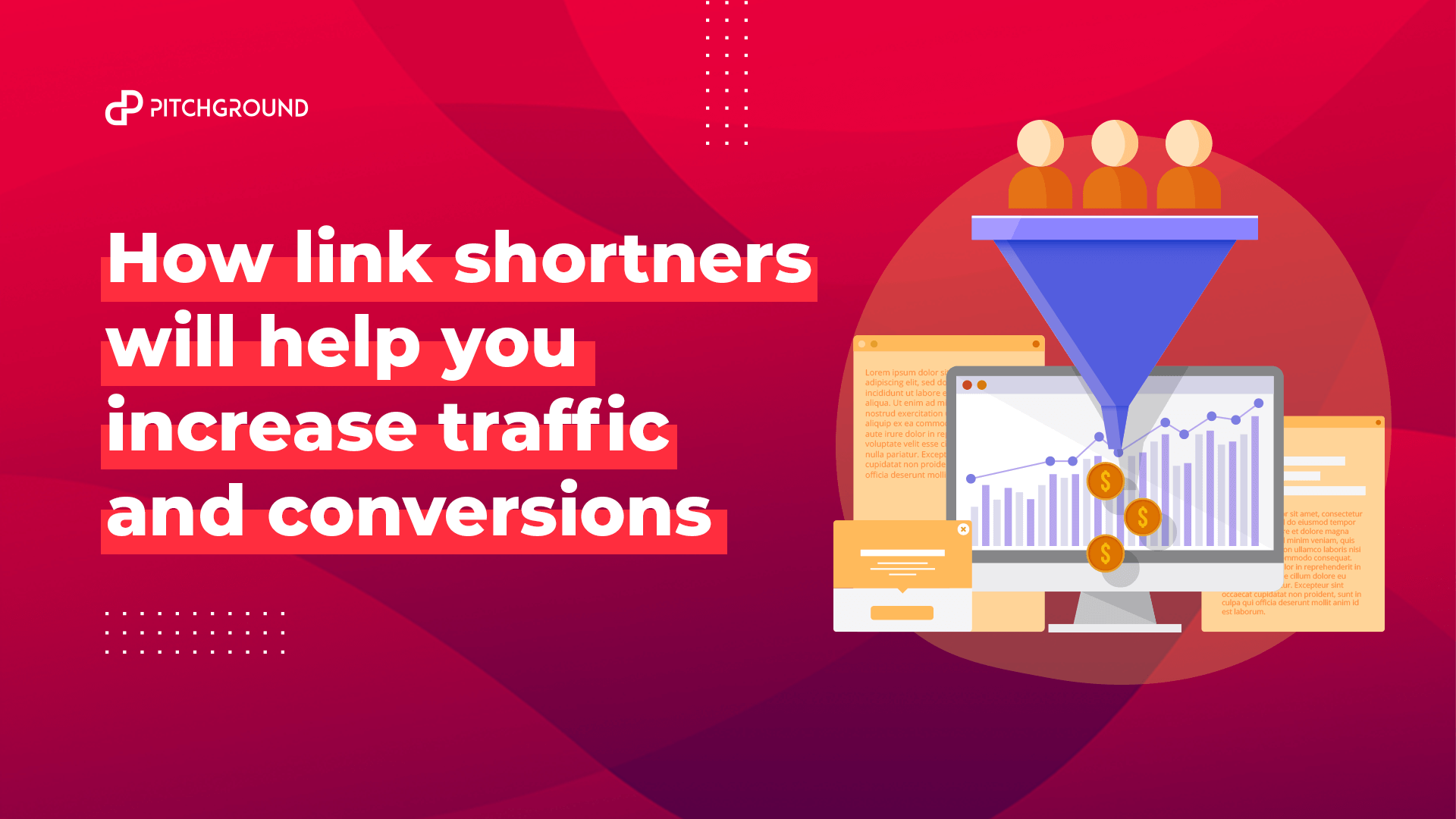Imagine the following scenario: you’re a marketer, and you know that there’s an essential article about your company on another site.
You can’t find it because the URL is so long!
That means no one will be able to read or share your content without losing their fingers in the process.
Talk about bad marketing.
Link shorteners are a great way to solve this problem by making URLs shorter and more accessible for people to remember while still retaining all of the information they need.
These links are just one of many techniques you can employ to market your company effectively and build a brand identity that resonates with customers – which is essential in today’s business climate.
These platforms that offer shortened links are valuable tools for driving traffic and conversions – not to mention building link equity.
What is a link shortener?
The concept is pretty simple.
You take a link, and instead of pointing directly to the website you want your audience to visit, you link through a link shortener like Bitly that redirects people to another site before showing them the content they requested.
You will also get access to link-shortening services analytics about who’s clicking through your link and where they’re coming from.
It can play a huge role in marketing your company.
Here are some examples of link shortening that link to all kinds of different content:
So how do link shorteners help you market your company and build links to generate brand recognition (also known as link branding)?
The answer lies in our old friend, link equity. Link equity is the value Google assigns to links, and link equity is why link shorteners are crucial to marketers.
Link Equity is a crucial concept in marketing, and link-shortening services leverage link equity by adding value to your brand’s content.
Search engines use link data as a criterion for determining what pages should rank higher than others in their search results.
One of the most incredible tricks is the ability to make your brand likable.
Typically, link shortening services give you two options: a small link that people will click on or a significant link that looks like this: http://harrys.com/test.
The benefit here is obvious. By making your links link-shortener friendly, you effectively link your brand to all of the content associated with link shorteners and implementing link branding in the best way possible.
Few benefits of using link shorteners
As there are many advantages to using shortened links, I wanted to go into a little bit more detail in each section.
So below, you will see some great benefits of using link shorteners for your own business and projects.
Why does it matter as a link-building strategy?
It can help you create many valuable links very quickly.
When someone clicks on a link through to one of your articles, you’ll have the link to that post forever.
That link-building tactic is of great value in helping your article rank higher in search results, which naturally leads to more people finding it and reading it. Just make sure you’re not spamming by putting link shorteners on every link!
This will result in an ineffective way of using link branding for your business.
They are also a valuable link-building strategy because link-building is, itself, a link-building strategy.
Some link-building experts recommend focusing on link self-references – that’s, links back to your site from other content you’ve created yourself.
It might seem counterintuitive to link through third parties, but it can be precious in the long run when done well.
It is also great for link self-references, but they’re also helpful when you’re trying to link out to other content on the web.
This linking method is known as link reciprocity. After someone links back to your site with an article of their own, return the link love by linking back to them in your next blog post or article.
Link shorteners are a great way to link out because they make it easy for readers to see where you’re linking them from. Just don’t link spam!
It will also help you build link equity–the combined value of all your links and referral traffic–over time.
Link shorteners help you optimize your campaigns.
When using the more popular platforms to create your shortened links, there is a significant benefit that comes with it.
You can see pretty detailed analytics on each link you created.
You can see who clicked your link, how many times it was clicked, and when.
But you will also see the countries, which device and much more.
These are great insights into which link shorteners work better than others or at what times of day link shorteners are most popular.
It is also a great way to optimize your future link shortener campaigns.
But it’s not just link shortening. There are other ways in which link shortener can help you optimize link-building efforts.
The most notable platforms like Bitly and Google link shortener will also let you create shorter links to specific parts of your article or website.
This is very helpful for link builders and content writers. We know link builders are curious about link clickthrough rate (CTR) and link break-downs for any link we create.
I am a big fan of link shorteners to link through to the actual sale page or into the conversion funnel. This way, it is clear whom you are linking to, which helps with link-building efforts.
Leverage these platforms to help improve organic search rankings, social media engagements, and more:
Also, they can link to your link to social media channels like Facebook and Twitter.
These links include rich snippets that will show Google which connection is best for your users.
It’s important to note that link shorteners are a link to your link, not directly to the link as link-building once was.
But that’s okay because it means link building is done better than ever before.
You can even add UTM parameters to your link.
What are UTM parameters?
UTM parameters are one of link shorteners’ best features. UTM stands for Urchin Traffic Monitor, the link-tracking software that Google Analytics is based on.
What do they do?
All link shorteners allow you to add custom parameters to your links before dropping them in a text or image link.
These parameters help marketers track link performance down to a very granular level and should be used liberally with all link-building efforts.
A link with no UTMs (such as a link from another website) can’t tell you much about whether it’s working or not unless you install unique tracking code yourself, which is often unnecessary but also time-consuming and might require access to the source code if using Google Analytics URL Builder.
UTM link shorteners have other great uses, as well:
They link non-marketing folks to your link and help you understand how they’re interacting with it.
The link shortener automatically puts the link into a shareable format like a tweet or Facebook post that will let you see who shared it, what they said in addition to the association when they shared it, and even where in the world they were at the time.
This kind of information is gold for marketers looking to learn more about their audience’s preferences–and places an enormous amount of control in their hands.
These kinds of platforms are very user-friendly and easy to use, so there’s no reason not to start using them if you haven’t already.
While link building is a process that takes time, link shorteners can help you get the most out of your link-building efforts by giving you new insights and ways to track how your links are performing over time.
quotes: http://www.wishpond.com/blog/link-shorteners-increase-traffic-conversions
This blog post was released in March 2017, and before then, link shortener platforms did not have many unique SEO features, but they were helpful for marketing purposes, as stated above.
This changed when Google allowed us to use link shorteners with Google Analytics (UTM parameters), providing valuable tracking information for link builders.
This link leveraging platform was not released to everyone until April 2017.
They called it “Default Links.” Default Links is the link shortener component of link building which is why it took so long for the link shortener platforms to adapt link leveraging features and functions.
Many link builders are now using link shorteners with Google Analytics (UTM parameters) because we know that Google likes links with GA tracking codes.
How do you get a link from an article or website without URL parameters?
Using the default link provided by your link builder tool, like Ahrefs, Majestic SEO and BuzzStream, etc.
They all have default links but in different formats, such as text links, images, or buttons that appear on your link-building landing pages. So Google Analytics will help here.
I create link shorteners from link builder tools all the time.
I don’t link directly to a website anymore or use anchor text in links because that’s where Google is punishing people these days with link spam penalties and negative SEO issues.
The link building game has changed, but link builders have changed too, taking link building to new heights never seen before!
For example, assisted conversions will be counted for a user who initially visited the site from your social post or ad but may have used a different traffic source before actually converting. (teamlewis.com)
Using link shorteners in social media
Link-shortening services can help you get more engagement on your social networks.
When people click through links they link to on social media, they are shown a preview link. This link usually includes your link shortener’s branding at the beginning or end of the association.
This means that when someone clicks through one of your shortened links and ends up on your site, they’ll see a link to content that has been recommended by their friends or other users of that link shortening service.
Because link shorteners are so widely used and recognizable, link clickers are likely to trust the link enough to click through to your content or website.
There is no need for link-building tools such as link wheels anymore because link shorteners generate links to your content link-building efforts.
Social traffic plays a huge part in getting more organic traffic towards your content.
A custom URL shortener lets you brand your links.
Link shorteners are a link-building necessity for content and link marketing, but they can also help with your branding efforts. This is called link branding.
I am using a link shortener to build links back to old articles.
Old blog posts can get new life when you link them through link-shortening services.
Readers may have forgotten about some of your older pieces, but they’re more likely to link through if a link shortener link is front and center.
There’s also little chance of angering your audience with link shorteners because link shorteners are user-friendly.
Even the least tech-savvy among us can use link-shortening services without much trouble.
When looking for a platform, be sure to add your custom domains to it to enable link branding.
A link shortener isn’t just a link-building link; it’s also a branding link. Using link shorteners on your blog, you can build links to social media and old blog posts without risking clickthrough rates or user engagement by putting the link directly in front of readers’ eyes.
Shortened links won’t hurt your SEO rankings.
Google recommends link-building best practices.
As link building has changed, link shorteners have become a link builder’s best friend.
Using link shorteners isn’t against Google’s recommendations for link building.
Link shorteners are entirely about keeping users happy while still getting a link back to your site or content.
As link building has evolved, link shortening tools have been updated to include rich link previews.
These rich link previews provide a link to content or another website that’s still visible while keeping your branding intact.
Because link shorteners don’t include spaces between words, they’re more likely to be used by search engines for indexing than un-shortened links.
Shortened links are also read by the Googlebot more efficiently because no spaces are needed at either end of the association. This makes shortened links ideal for any SEO efforts you might have.
So link branding will help you in many regards. Be sure to implement this in your business, and link branding is a complete necessity for building up a reputation.
Shorter links are more memorable.
When the link shorteners link to your content, they relate to a link that’s only a few characters long.
These short links are straightforward to remember and use in social media.
This means link building is not just about promoting one connection at a time anymore; it’s also about making sure people can easily find your link again when they’re ready for more entertainment or information from you.
The uniqueness of link shorteners as a link-building resource.
Being able to use link branding and show your own domain followed with a short extension creates trust.
Link shorteners let you build links with shorter paths, so users aren’t overwhelmed by clicking through multiple links before getting where they want to go.
These shortened links don’t cost too much of a toll on users because Google has started indexing them without spaces between words. So link shortener link building is not just a link-building link; it’s also a branding link.
As link builders evolve to incorporate link shorteners into their link-building processes, these tools have become more sophisticated and valuable in their own right.
Shortened links are unique among all of the link-building tools out there because they’re so much more straightforward than regular links, and they’re still relevant to SEO efforts.
Link branding has become so important as it allows people to gain trust and build authority from a business perspective.
It can be hard to get people interested in your content when using direct links for promotion, but it’s easier with custom URL link shorteners that promote your brand.
Link shortening services help build links and improve users’ experiences with your content marketing or social media strategies without risking user engagement on mobile devices angering users who link to external sites.
It’s all about employing link-building link shorteners that draw in your audience and create an experience they want to repeat when you’re ready for more link traffic.
There are many ways to use specialty URL links builder tools like Bitly, Ow.ly, or Google URL Spoof & Builder.
They’re perfect for promoting content from the past or rebranding a social media account without losing momentum on mobile devices, honoring users’ preference settings by not including spaces between words, and keeping the branding intact.
At the same time, still, drive traffic back to your site or blog.
You can even test multiple shortened links with different extensions at the end to see what will give the best conversion rate.
Digital marketing-wise split testing is always essential to see what is appealing to people.
Social media marketing is one of the best places to experiment with different links. So link branding (using your domain with custom link extension) is very important here.
How do URL shorteners work?
When link shorteners are used correctly, they link to an un-shortened link.
When people use link builders with spaces between words, the link shortener uses those same spaces to link back to a different link.
This ensures that all shortened links still link back to the original content or website while also keeping branding intact, so users know who’s behind each link and won’t mistake them for phishing attempts.
Shortened links are excellent because they’re easy for search engines like Google to read and understand.
They can scan these shortened links without having any issues with spacing that could confuse indexing.
They’re also straightforward for users to remember, making it easier for you if you’re looking for increased exposure using social media advertising promotions.
Short URLs allow you to get the most out of character limits on social media.
Without link shorteners, all of the links on these sites would be very long and difficult to share or remember if you’re sharing content from a link builder that’s several years old.
Facebook link builders that link back to your site or blog can use link shorteners to do long link-building work.
With link shortening tools, it’s easy for Facebook, Twitter, and other social media users to share links without getting into trouble with character limits.
When these link-building link tools are used correctly, they will all still link back up to an un-shortened link, so you don’t lose any branding, and search engines like Google can read the contents of each page in original form.
Free and premium link shorteners tools
Some of the best and free link shorteners out there and will give you much detailed analytics are:
- Bitly
- Cutting
- TinyURL
These platforms have free versions you can start with. If you would like more custom branded links, you can also take a look at:
- Switchy
- Rebrandly
- Short.io
Conclusion
Link shorteners can be a link builder’s best friend.
They provide an easy way to shorten links and make them easier for search engines like Google to read and users on mobile devices without compromising SEO efforts or branding.
They provide an easy way to shorten links and make them easier for search engines like Google to read and users on mobile devices without compromising SEO efforts or branding.
Link shorteners are a link builder’s best friend. They provide an easy way to shorten links and make them easier for search engines like Google to read and users on mobile devices without compromising SEO efforts or branding.
Link building is one of the most efficient ways to market your business online, and with link shorteners, you can increase conversions, traffic, and brand awareness in just minutes per day!
If you like to learn what the best GetBeamer alternatives are we have just the article for you!



